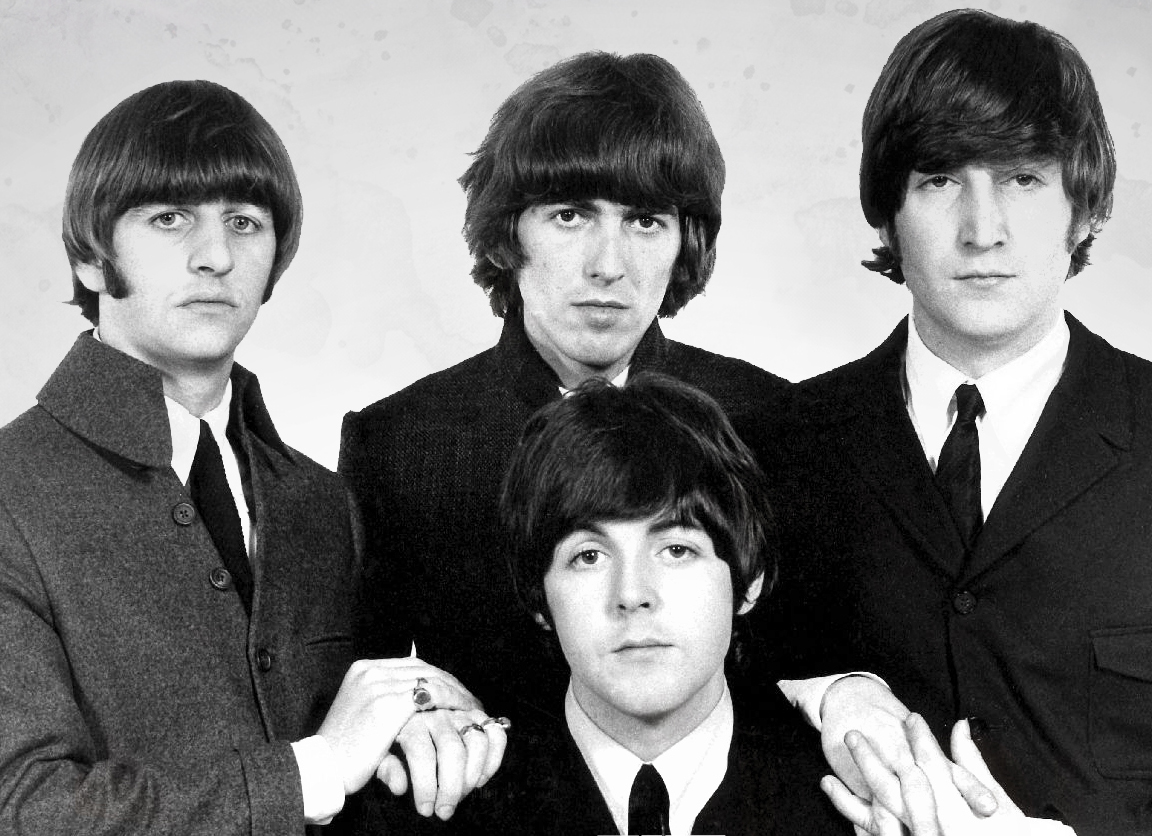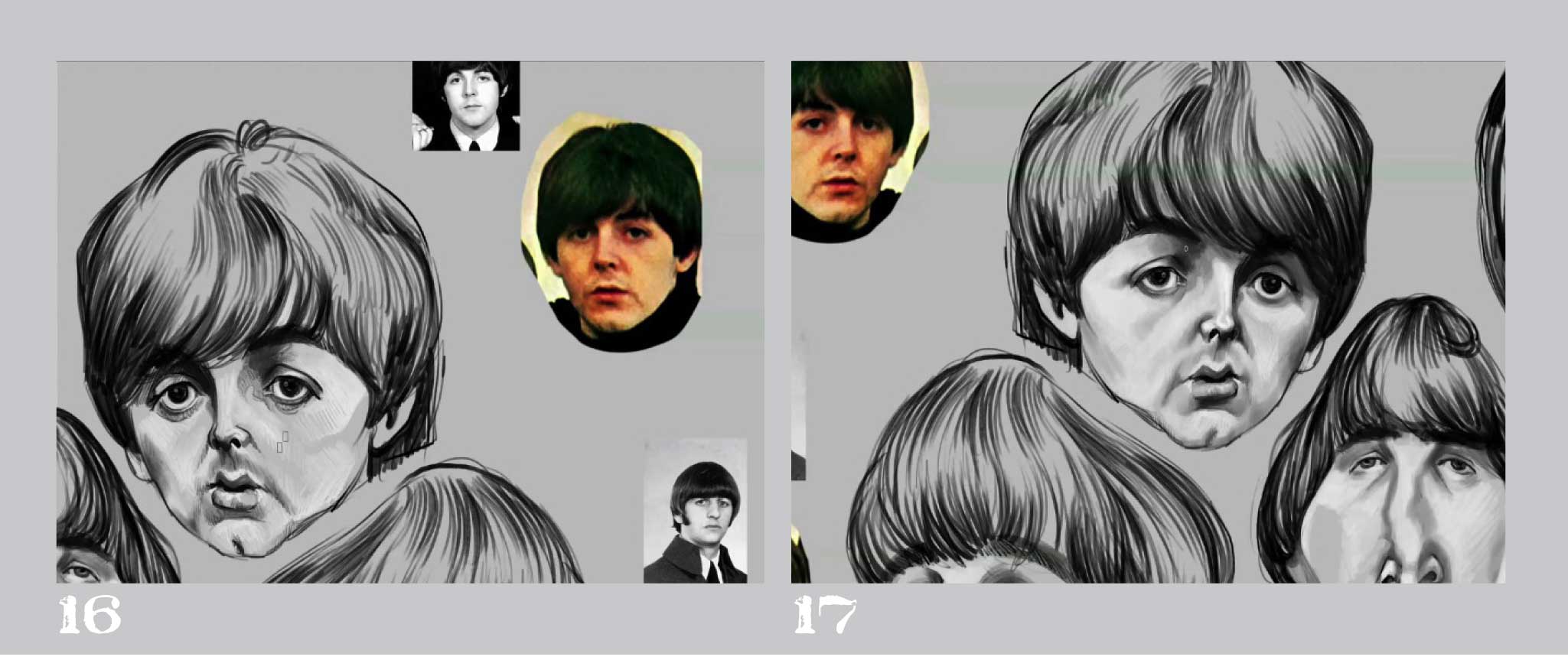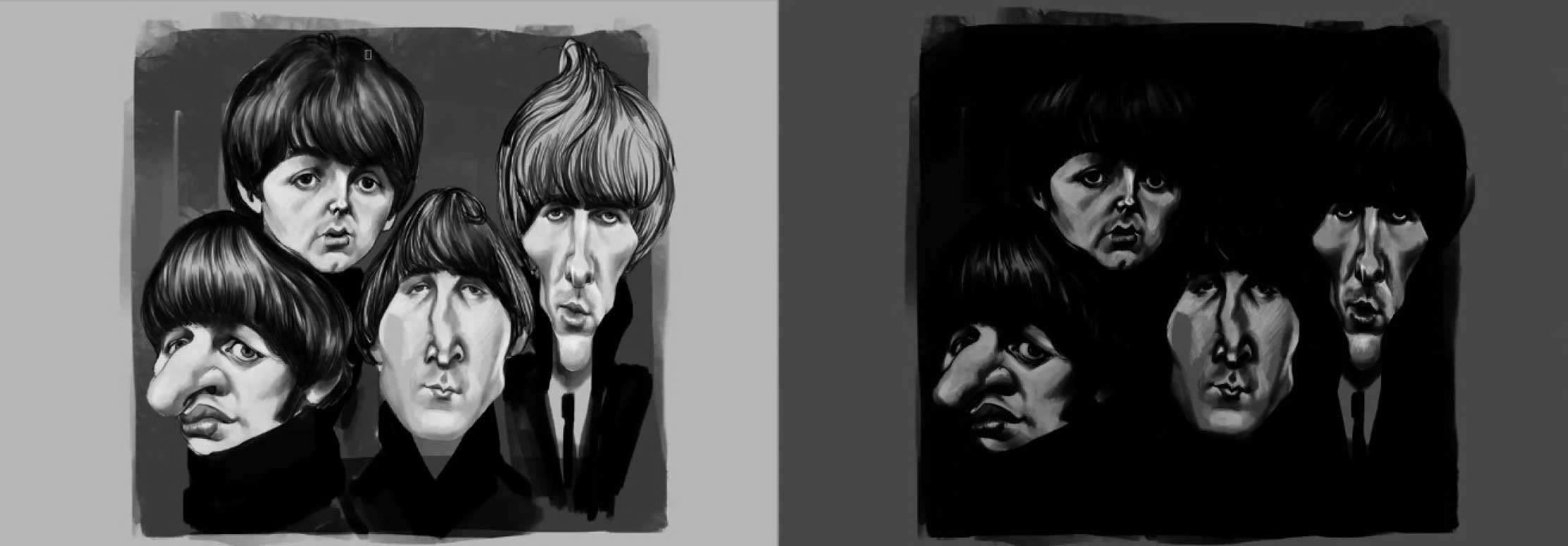The Creative Process Series #1 - The Beatles
The Beatles - Caricature by Marzio Mariani
Here’s why I decided to make the umpteenth caricature of the Beatles. I did it on purpose because this meant dealing with a subject of a legendary popularity and thus challenging myself on a very hard likeness test. I approached the task with the humility required and spent a whole day trying to make this tribute to the Fab4. I want to share with you my process and the steps I went through. Not a tutorial …call it what you want, I'd rather talk about self-analysis of my creative process. Each and every artist has his process and there is no one better than the other. I just want to share with you mine, but keep in mind that there is no right or wrong especially when approaching artistic matter.
STEP 1. Finding the right picture
I always spend a reasonable amount of time finding the perfect picture. It must be an image that strikes my attention, in which the subject "looks just like himself ". I look for a characteristic expression or attitude. In this case, I've picked a couple of pictures that show the Beatles in their hippy heyday… a classic.
STEP 2. Setting up the basic outline
I usually sketch the basic outline according to the elementary forms that enclose a face. Then I give a few strokes for the "general distortion" that fits that particular subject. This helps to quickly and effortlessly draft out whatever face I wish to draw.Then I focus on the subject, looking at the picture for the longest time, concentrating on the visual cues of that particular face. Remember the Carracci? I try to “grasp the essence of reality lying behind appearances”. Without going into too much detail at this stage, I sketch the shapes: hairstyle, nose (is it long or wide?), size of the eyes (are they big or small, are they close together or too far apart?), the proportions of the mouth compared to the mandible and so on. Remember the times of the eraser?... luckily there’s Photoshop helping us
STEP 3. Focusing on volumes
Step 3 requires small precision brushes being a stage of subtleties that can make a big difference. I look for protrusions and recesses, such as cheekbones, nose, lips, forehead or chin. These details can be very different from one individual to another and the smallest warp can completely distort the expression of a face and thus its likeness with the real subject. I almost feel like an explorer in search of the lost gem. I keep going back and forth from that particular that must be distorted to the total view of the face that needs to maintain the similarity with the subject, trying to push the limit of the distortion without giving up on the likeness.
STEP 4. Adding a grey layer
Usually I add a gray layer to manage the black and white strokes. The immediate pleasure of the embossing/engraving effect is a small miracle every time! At this stage the similarity is more accurate.
Just adding a little brushstroke can affect the expression. It's a recent discovery of mine: the importance of the tiniest stroke when drawing a caricature, accuracy is essential.
Switching the image horizontally helps to spot errors and inconsistencies. It is as if there was a balance to the internal composition of the face and if you scale down or up a single part everything else must move to restore the balance.
The work is fast or slow depending on the care that you put into it. In this case I pushed myself at a medium level of detail.
At the end of this process, darkening the image helps me to check the highlights and dark spots of the drawing.
STEP 5. Adding a concept
In the case of the Fab4 I purposely stopped before this step, because I plan to start from here and explore this particular stage in the next “self-analysis” I will post.
Usually though when I feel satisfied with similarities and distortions (Step 4) I try to come up with an idea or a core concept behind my work. It can be a particular object that tells something more about that character, an outfit or even a more intangible element such as a surreal setting, position or situation. An element in other words that playing with the subject and entering in connection with it triggers an alchemy and accentuate the result.













